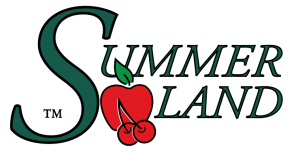Apple Curculio
General Description
Hosts
Pear, Saskatoon berry (service berry), hawthorn, apple, quince, cherry, and crabapple.
Damage
Most fruit damage occurs in the outer 2-3 rows adjacent to wild hosts such as Saskatoon berry. Adult curculios feed on young pear fruit and cause the tissue around the feeding puncture to become very hard. A small pustule is often present and surrounded by a circular, shallow depression. Deformation of the fruit increases as it grows, rendering the fruit unmarketable (Figs. 1 & 2).
.jpg) |
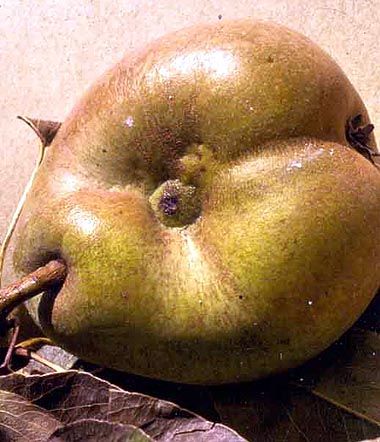 |
| Figure 1. Pear fruit damaged by apple curculio. (BCMA) | Figure 2. Pear damaged by apple curculio feeding. |
On cherry, females chew a very small hole in the young fruit near the stem in which they lay an egg. Infested fruit may drop prematurely or be present at harvest, making it unmarketable (Fig. 3).
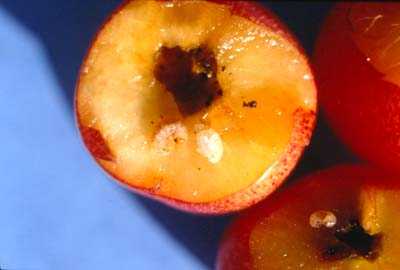 |
| Figure 3. Sweet cherry infested with apple curculio larva and pupa. (H. Philip) |
Damage to apples appears as raised russeted areas (Fig. 4) (early season feeding injury) or as small holes (Fig. 5) (late season feeding injury).
.jpg) |
|
| Figure 4. Damage caused by early season feeding. (BCMA) | Figure 5. Apple damaged by adult apple curculio feeding. (BCMA) |
Identification
Larvae - Mature larvae are the same size as adults, legless, white grubs with a brown head (Fig. 6).
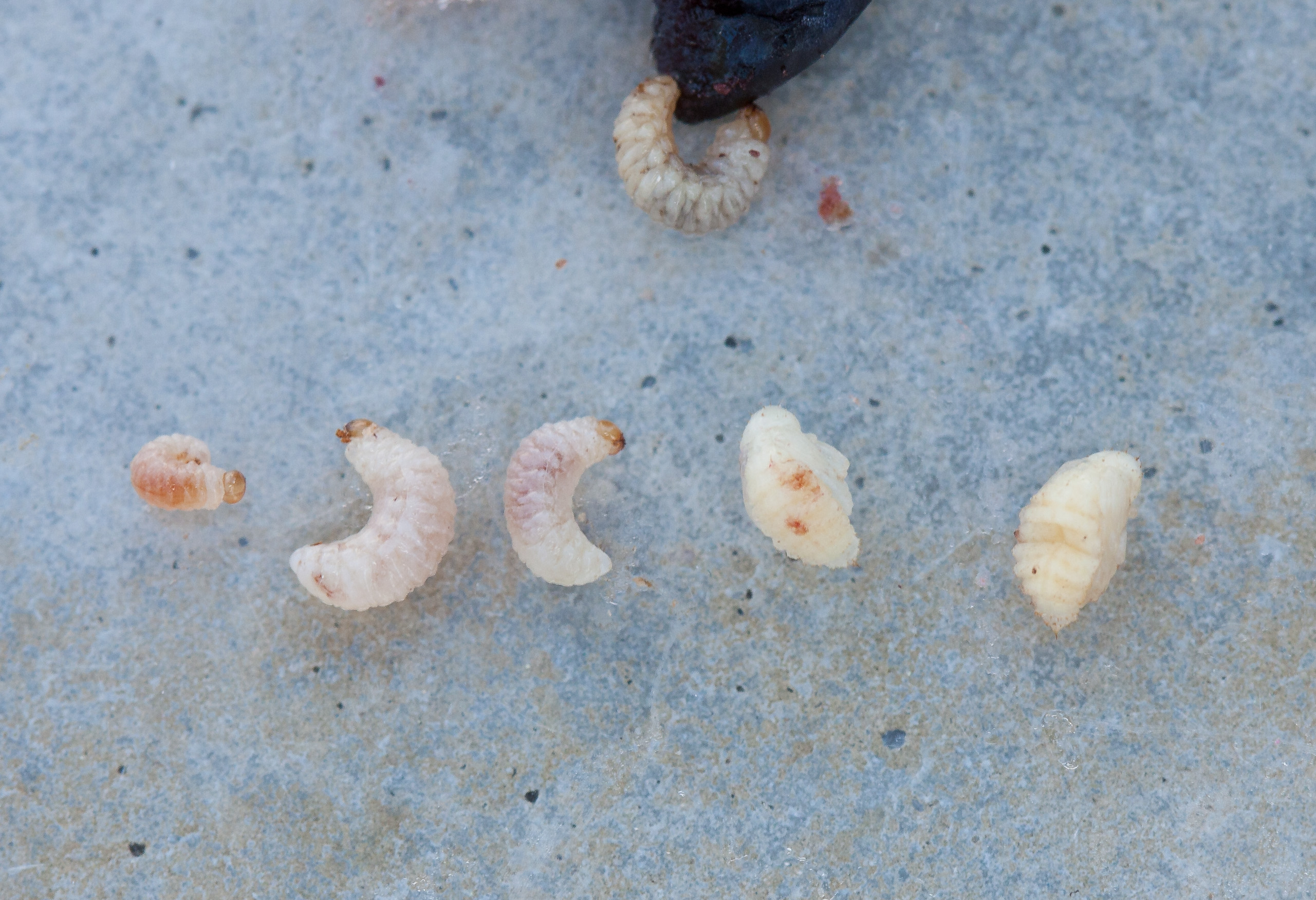 |
| Figure 6. Apple curculio larvae and pupae. (BCMA) |
Adult - Small (about 5 mm long), reddish-brown weevils with long, narrow snout and four small humps on their backs (Fig. 7). They are good fliers and will drop and play dead when disturbed.
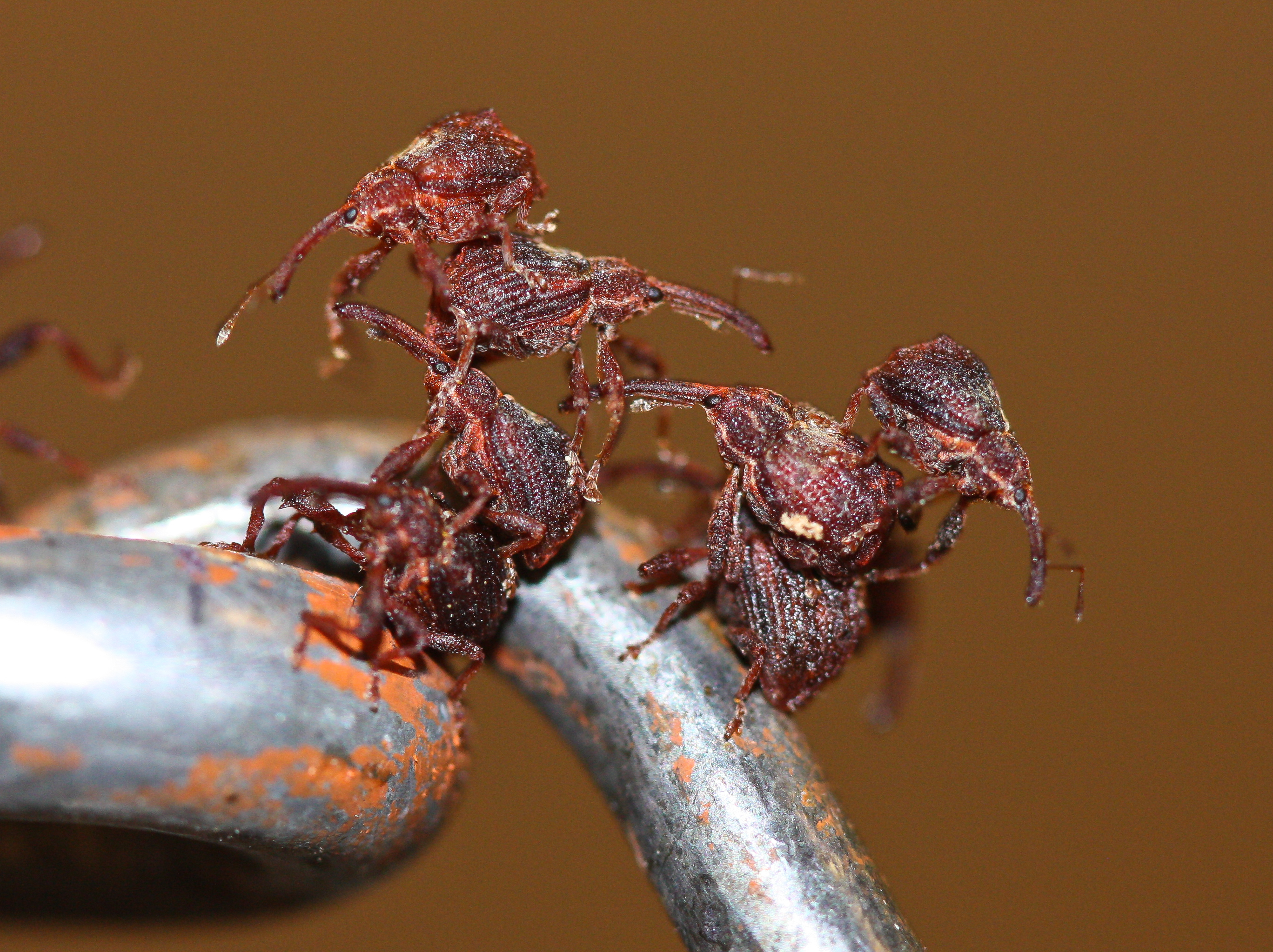 |
| Figure 7. Adult apple curculios. (BCMA) |
Life History
Apple curculios overwinter as adults that emerge in the spring to feed on buds, fruit spurs and developing fruit. They prefer to lay eggs in cherry and Saskatoon berry as fruit inspections have revealed few larvae in apple, crabapple or pear. The subsequent generation of adults appears from late July to early September when they feed on fruit before seeking overwintering sites near the host trees.
Monitoring
Place yellow sticky traps, such as those used for cherry fruit flies, in pear blocks prior to bloom to detect adult curculios. Cherry growers should also set out traps at the same timing to detect adults. Locate the traps in areas with previous feeding damage. Limb taps taken during bloom through petal fall will also aid in detecting adults. There is no economic threshold for this occasional pest.
Management
Cultural Control
Remove alternative food or breeding hosts such as saskatoon from areas near orchards.
Chemical Control
No registered chemical control; however, contact insecticides applied during early petal-fall of pear will control apple curculio.
